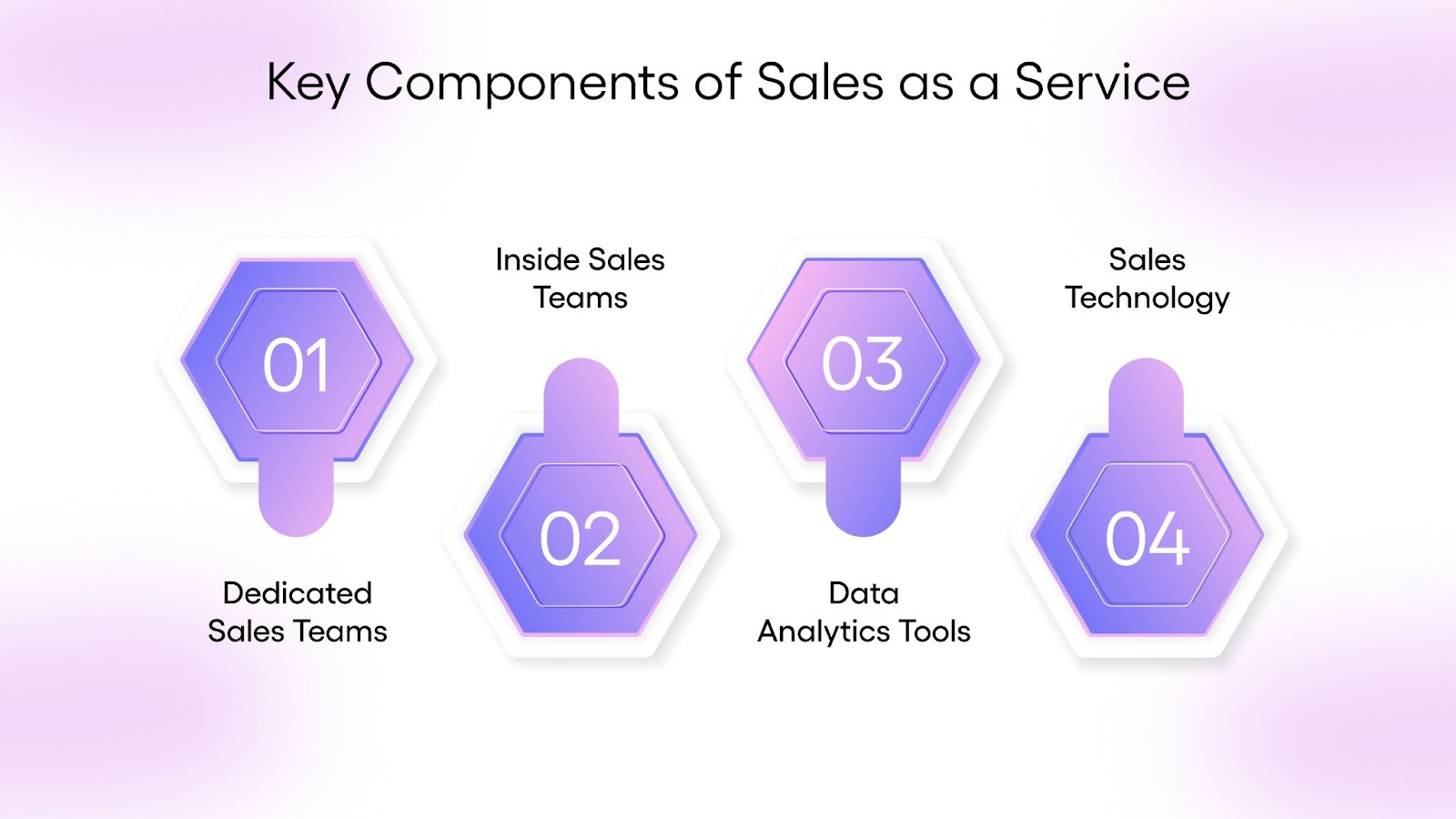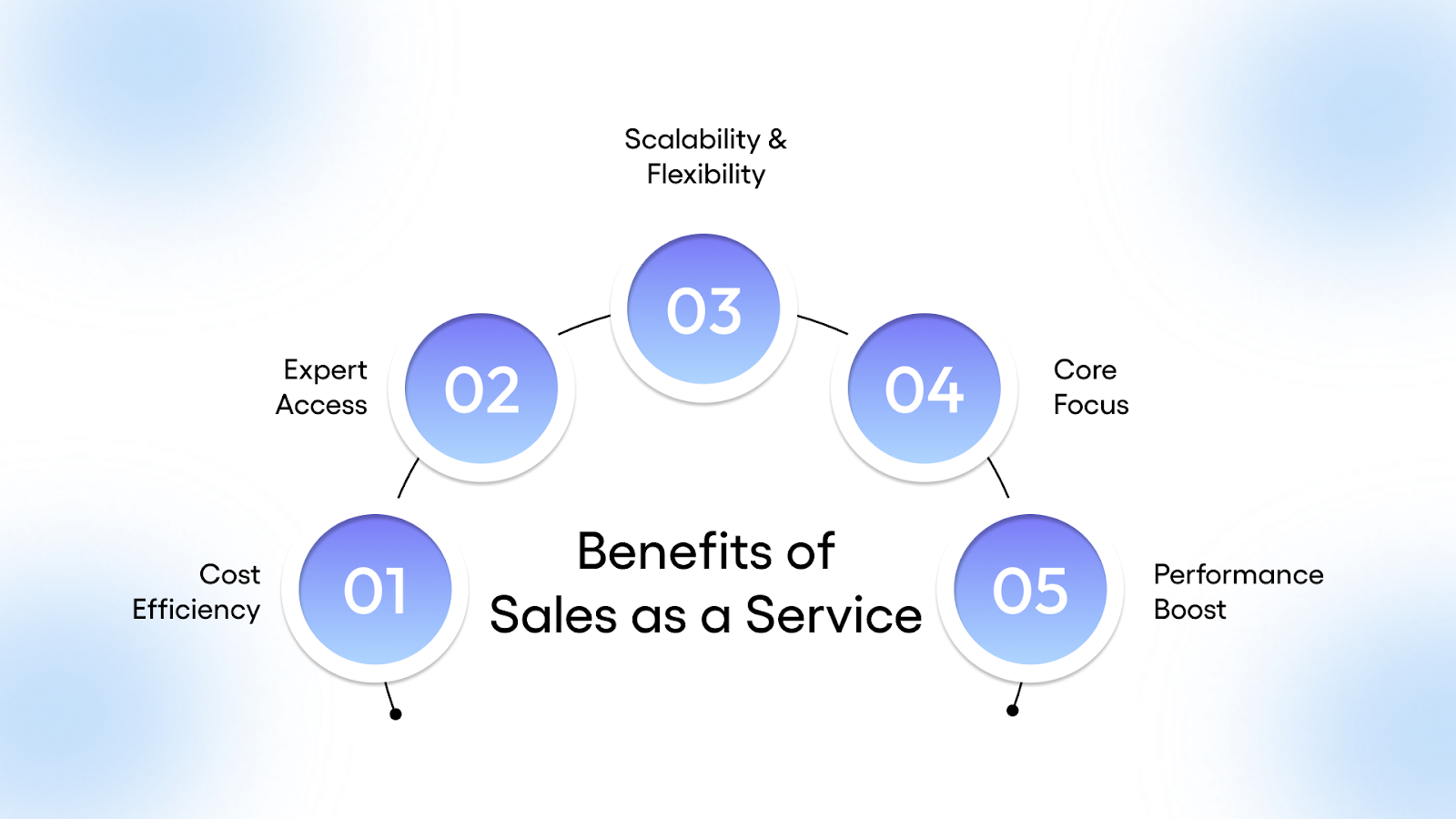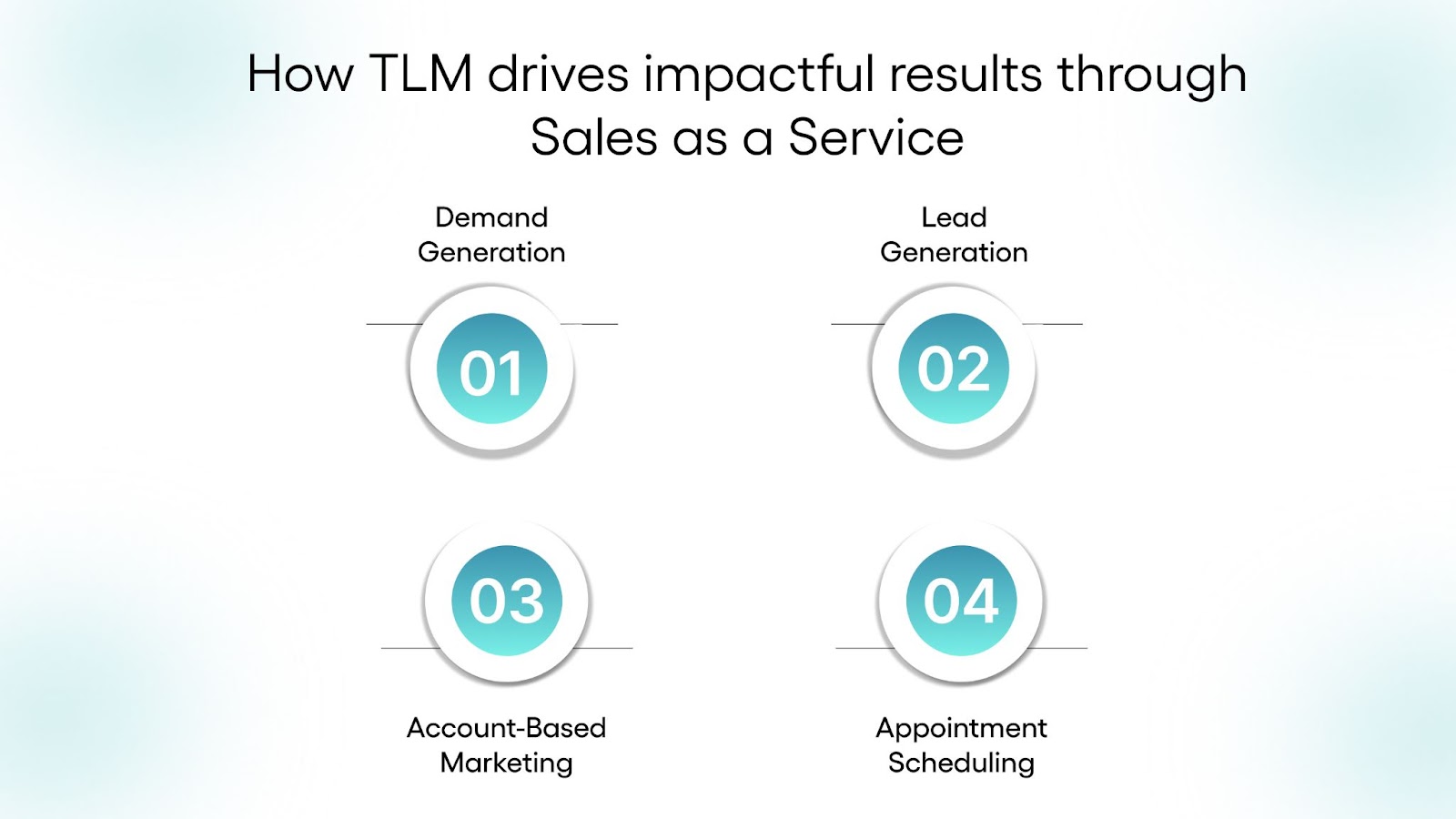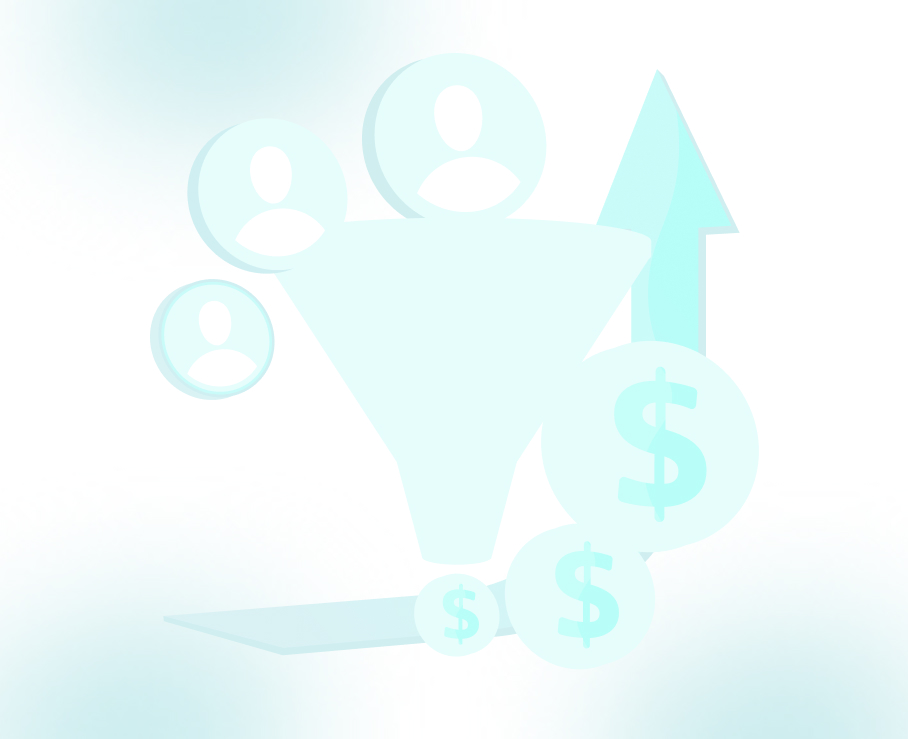
Understanding Sales as a Service: Benefits and Implementation
.jpg)
Driving revenue growth while keeping sales operations efficient is a balancing act for many businesses. As companies grow, they often face challenges in scaling their sales efforts, managing customer acquisition costs, and maintaining operational efficiency. Sales as a Service (SaaS) is a powerful solution that has emerged to tackle these challenges. By outsourcing sales-related functions to expert providers, businesses can streamline their operations, access specialized skills, and drive growth without the overhead costs of in-house teams.
In this blog, we will explore what Sales as a Service is, why it’s important, how it can benefit your business, and the steps to successfully implement it. Let’s understand how this approach can elevate your business development strategy.
TL;DR:
- Sales as a Service (SaaS) involves outsourcing sales functions to expert providers to enhance efficiency and scalability.
- Key benefits include cost savings, access to specialized knowledge, scalability, and improved sales performance.
- Implementing SaaS requires defining objectives, choosing the right provider, setting KPIs, and fostering collaboration.
- Challenges include potential loss of control, communication barriers, and data security concerns.
- Partnering with experts like TLM can help businesses maximize sales results through targeted lead generation and personalized campaigns.
What is Sales as a Service?
Sales as a Service (SaaS) involves outsourcing key sales functions such as lead generation, customer acquisition and prospecting to specialized providers. Unlike traditional outsourcing, which may only offload specific tasks, SaaS offers a comprehensive solution. Providers manage the full sales cycle using their expertise, technology, and systems, delivering a tailored sales process without the burden of managing a full in-house team.
Whether you need end-to-end sales management or assistance with specific sales functions, SaaS can be customized to fit your business’s unique needs, ensuring optimized sales performance from day one.
Key Components of Sales as a Service

Sales as a Service is designed to be a flexible, full-cycle solution that incorporates several essential components. Here’s a breakdown of each key element:
- Dedicated Sales Teams: SaaS providers deliver a fully trained sales team to represent your brand. This external team functions as an extension of your in-house team, without the need to invest in hiring, training, or managing an internal sales force. They are experts in executing the sales process across every touchpoint, ensuring consistent and professional interactions with prospects.
- Inside Sales Teams: Inside sales teams focus on high-volume outreach, engaging with leads remotely via email, phone, and virtual meetings. Their primary functions include prospecting, lead nurturing, and appointment setting. They are ideal for businesses looking to scale into new markets or grow without a physical presence.
- Data Analytics Tools: Advanced analytics tools are a core part of SaaS offerings. These tools allow providers to monitor key metrics, track lead behavior, and adjust sales campaigns in real time. A data-driven approach helps refine targeting, optimize lead engagement, and drive more effective sales strategies.
- Sales Technology: SaaS providers use advanced dashboards, sales engagement tools, and lead scoring systems. These technologies tailor outreach, and ensure smooth follow-up at every stage of the sales cycle.
These components work together to form a scalable, efficient, and fully managed sales engine that accelerates business growth without the overhead costs of maintaining an internal sales team.
Also Read: What Your Sales Team Should Do with Marketing Qualified Leads
Implementing Sales as a Service: A Step-by-Step Guide

Implementing Sales as a Service requires careful planning and a strategic approach. Below are the key steps for effectively integrating SaaS into your sales operations:
1. Define Clear Objectives
Establishing clear business goals ensures both you and the SaaS provider are on the same page and working toward common targets.
- Set specific sales goals: Are you looking to increase revenue, penetrate new markets, or enhance lead generation?
- Align these goals with the expected outcomes from outsourcing: What should the provider deliver in terms of performance?
- Define success metrics: For instance, higher conversion rates or reduced customer acquisition costs.
Clear objectives provide direction, making it easier to measure progress and adjust strategies when needed.
2. Assess Sales Needs
A detailed evaluation of your current sales processes helps identify the most suitable areas for outsourcing.
- Analyze current performance: Identify gaps in lead generation, prospecting, or customer relationship management.
- Focus on your business’s challenges: What internal sales processes are struggling and need external support?
- Match needs with SaaS capabilities: Do you need help with full-cycle sales or specific functions like lead nurturing or customer acquisition?
Understanding these needs ensures that the provider’s solution fits your business's unique requirements, driving better results.
3. Choose the Right Provider
The success of SaaS depends heavily on selecting the right provider. Choose a partner that aligns with your industry, growth goals, and sales objectives.
- Evaluate industry experience: Look for providers with experience in your specific sector and a proven track record of success.
- Assess technological compatibility: Make sure their tools and sales technologies integrate smoothly with your operations.
- Review scalability: Ensure the provider can grow with your business, adapting as your sales demands change over time.
A good provider will seamlessly integrate with your operations, driving faster and more effective results.
4. Establish Key Performance Indicators (KPIs)
Defining clear KPIs ensures that both your business and the SaaS provider have a measurable understanding of success.
- Set concrete metrics: Track lead conversion rates, customer acquisition costs, or revenue growth.
- Define specific performance expectations: What do you expect from the provider in terms of lead quality or sales volume?
- Align KPIs with your overall sales goals: Ensure that the metrics you choose reflect your long-term business objectives.
Establishing KPIs helps maintain transparency, track progress, and ensure accountability throughout the process.
5. Create a Collaborative Environment
Collaboration between your in-house team and the outsourced sales team is crucial for smooth integration and alignment of efforts.
- Encourage regular communication: Set up weekly meetings to review progress, share feedback, and discuss challenges.
- Define shared goals: Ensure both teams understand and work toward the same sales targets and strategies.
- Culture of openness: Promote honest and clear communication to avoid misunderstandings.
A collaborative environment ensures that both teams are aligned and working towards the same objectives, making the partnership more effective.
The 10-3-1 Rule of Sales
When implementing Sales as a Service, leveraging proven sales strategies can significantly improve your results. One such strategy is the 10-3-1 rule, a simple yet effective prospecting technique. Here's how it works:
The 10-3-1 rule involves reaching out to 10 leads, engaging in 3 meaningful conversations, and securing 1 appointment or sale. By focusing on having quality conversations rather than simply increasing the number of contacts, this rule encourages sales teams to prioritize meaningful interactions that are more likely to result in conversions.
Incorporating the 10-3-1 rule into your sales strategy helps maintain a balanced approach, improving efficiency and ensuring you're targeting the right leads, not just casting a wider net.
By focusing on quality engagements and tracking the success ratio, you can better align your Sales as a Service approach with tangible, measurable goals, optimizing both lead generation and conversion.
Benefits of Sales as a Service

The decision to adopt Sales as a Service comes with multiple benefits that can transform how a business approaches its sales strategy. These benefits can help drive growth, increase revenue, and optimize operational costs.
- Cost Efficiency: By outsourcing sales, businesses can save on costs like salaries, office space, benefits, training, and technology. Instead of maintaining an internal sales team, you only pay for the services you need. This significantly reduces overhead costs, freeing up capital for other strategic initiatives.
- Access to Specialized Expertise: SaaS providers bring deep industry knowledge and sales expertise that may not be readily available in-house. Whether it’s navigating complex markets, using cutting-edge sales technologies, or optimizing conversion strategies, outsourcing gives you access to highly specialized skills and strategies.
- Scalability and Flexibility: SaaS provides businesses with the flexibility to scale sales efforts in line with market demands. Whether expanding into new regions, targeting seasonal demand, or adjusting to growth, outsourcing allows businesses to easily adjust sales capacity without the need for long-term infrastructure investment.
- Focus on Core Competencies: Outsourcing sales functions allows businesses to focus on core operations like product development, customer service, and innovation. By relieving internal teams of non-core functions like sales, you enable your business to stay agile and focused on areas that drive competitive advantage.
- Improved Performance and Accountability: SaaS providers are performance-driven, meaning they are incentivized to deliver results. Unlike internal teams where performance metrics may be less rigorously enforced, external providers bring fresh perspectives, innovative strategies, and clear accountability. This leads to improved sales performance and a higher return on investment (ROI).
Also Read: Overcoming B2B Lead Generation Challenges and Solutions
How a Melbourne GRC Firm Boosted Sales with TLM's B2B Expertise
A Melbourne-based GRC firm, looking to expand its reach in the Australian market, needed help generating qualified B2B leads for their compliance product. They partnered with TLM, seeking an affordable, expert-driven approach to lead generation and appointment setting.
We crafted a 6-month email marketing campaign, targeting finance professionals, CEOs, and founders. Using the client’s trusted branding and a five-touchpoint strategy, we created compelling content that resonated with the audience.
The results were immediate. In the first week, we secured a few strong leads, and by the end of the first month, 13 qualified leads were generated. The CEO was thrilled, noting that closing just a couple of those leads would cover eight months of our services. The campaign proved to be both cost-effective and successful, demonstrating the power of targeted, well-executed B2B outreach.
This success reflects how TLM’s Sales as a Service approach can drive results by maximizing the efficiency and effectiveness of a company’s sales processes. TLM offers a range of services designed to help businesses optimize their sales strategies, especially in complex B2B environments like SaaS and MSP.
Here’s how TLM drives impactful results through Sales as a Service:

- Demand Generation: We develop strategies that create awareness and interest, driving potential leads to engage with your business.
- Lead Generation: We craft targeted campaigns to generate leads that meet specific criteria, ensuring high-quality prospects.
- Account-Based Marketing (ABM): We focus on high-value clients by tailoring strategies for key decision-makers to accelerate sales cycles.
- Appointment Scheduling: We streamline appointment bookings with interested prospects, enabling businesses to focus on closing deals.
Sales as a Service is a powerful strategy to optimize sales operations, reduce costs, and scale efficiently; with TLM’s expertise, businesses can enhance sales without in-house infrastructure. Our services empower companies to scale efficiently, increase revenue, and stay competitive in the marketplace.
FAQs
1. What is Sales as a Service?
Sales as a Service (SaaS) is a model where businesses outsource all or part of their sales functions to an external team of specialists. These providers handle tasks such as lead generation, outreach, and closing deals, using their expertise, technology, and systems to drive sales without the overhead of an in-house team.
2. What is an example of Sales as a Service?
A B2B company entering a new market might partner with a Sales as a Service provider to run targeted campaigns, engage qualified leads, and set appointments with decision-makers, without hiring or training an internal sales team.
3. What are the benefits of Sales as a Service?
Key benefits include:
- Reduced costs by eliminating the need for in-house hires
- Access to experienced sales professionals and proven strategies
- Scalability to match business growth or seasonal demand
- Improved ROI through performance-driven partnerships
It allows companies to focus on core operations while accelerating sales growth.
4. How do I implement Sales as a Service in my business?
Define your sales goals, identify functions to outsource, choose an experienced provider, and align on KPIs. For a smooth rollout, teams like TLM can support execution and deliver results faster.






